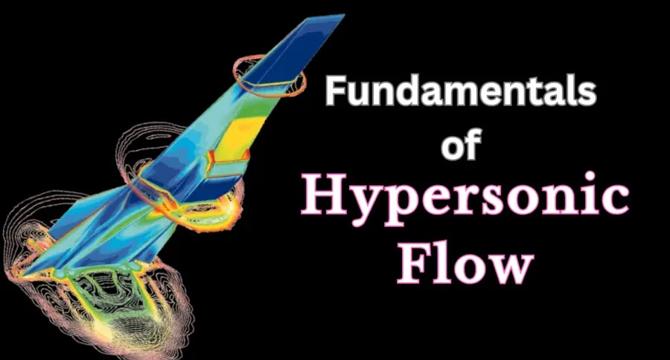Scientificworldinfo
1M
114

Image Credit: Scientificworldinfo
What are the Fundamentals of Hypersonic Flow?
- Hypersonic flow refers to the aerodynamics encountered at speeds typically exceeding Mach 5. Shock waves, aerodynamic heating, viscous interactions, real gas effects, and non-equilibrium processes are the basic characteristics that distinguish hypersonic flow from subsonic and supersonic regimes.
- In hypersonic flows, the air around the object undergoes rapid compression, leading to the formation of strong shock waves. This nonequilibrium state requires advanced modeling techniques to accurately predict flow behavior and interactions.
- Aerodynamic heating, and non-equilibrium processes are other critical factors that make hypersonic flow theory a complex and critical field for aerospace engineering.
- In hypersonic flow, boundary layer behavior on the object's surface is highly important. The boundary layer can transition from laminar to turbulent flow rapidly, greatly increasing heat transfer to the surface.
- Materials must be able to withstand extreme temperatures, thermal stresses, and even ablation, where the material erodes away to carry heat with it—a common method used in heat shields for re-entry vehicles.
- One of the most critical challenges in hypersonic flight is aerodynamic heating. As the shock waves form, the kinetic energy of the high-speed air is largely converted into internal energy, raising the temperature of the gas dramatically.
- Real gas effects and chemical nonequilibrium also play a significant role in hypersonic flow. At the extreme conditions of hypersonic flow, the gas behaves as a real gas rather than an ideal one.
- Two of the most critical non-dimensional parameters in hypersonic flow are the Mach number and the Reynolds number. The Mach number characterizes compressibility effects and shock strength, while the Reynolds number helps predict the extent of viscous effects and the development of the boundary layer.
- Aerospace Vehicles can benefit from Hypersonic Flow research. The most prominent applications of hypersonic flow research are in the design of re-entry vehicles, hypersonic missiles and glide vehicles, and high-speed passenger aircraft.
- Ongoing research in Hypersonic Flow focuses on non-equilibrium chemical kinetics, advanced materials, and Integrated Multiphysics Simulations to design the next generation of hypersonic vehicles.
Read Full Article
6 Likes
For uninterrupted reading, download the app